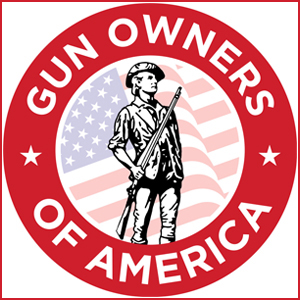This classic pre-'64 Winchester Model 70 bolt-action hunting rifle chambered for perhaps the model's most classic cartridge - .270 Winchester - is a real keeper.

As a teenager, my second foray into the wonderful world of “modern” centerfire rifles was a 1952 Winchester Model 70 in .270 Winchester. It was a simple, standard Sporter version.
During my teens, I trained horses for an old doctor and his wife, and I admired several of the fine vintage guns they owned. When “Doc” passed away, his wife called me and stated firmly, “I don’t believe in giving anything to anybody. Folks never appreciate things they don’t have to pay for, but I’ll sell you a rifle, a shotgun, and a pistol for five bucks each.”
That .270 Win. Model 70 became my primary hunting rifle. Over the next several years I took some significant big-game animals with it, including my first branch-antlered bull elk and a bona fide 33-inch main-frame mule deer buck.
Introduced in 1936, Winchester’s Model 70 was—according to enthusiasts—the ultimate refinement of Mauser’s controlled-feed action design. For 27 years it ruled American bolt-action hunting rifle markets and was dubbed the “Rifleman’s Rifle.” Jack O’Connor adopted it as his favorite and helped make it legendary through his articles and books.
In 1964 a massive cost-cutting redesign knocked the Model 70 from its best-of-the-best pedestal and drove it into budget-rifle territory. Push-feed “Model 70s” are better than many allege, but I don’t think they deserve the Model 70 moniker.
Although primarily sporting rifles, the Model 70 was also sometimes built to order for serious long-range competition and won many championships at the National Matches at Camp Perry. It served in limited capacity in the hands of the Marine Corps in World War II and the Vietnam War. Probably the most famous Model 70 in wartime history was Carlos Hathcock’s .30-06 sniper variant. As readers may know, Hathcock was perhaps our greatest sniper of the Vietnam era.
A tremendous selection of chamberings was offered at one time or another, including some pretty obscure cartridges. Size-wise, the Model 70 was adapted for cartridges ranging from the .22 Hornet all the way up to the .470 Capstick. Three action sizes served all: short, standard, and magnum. In general, the rarer the cartridge, the more collectors value the Pre-’64 Model 70.
Configurations ranged from the light Featherweight (with a 22-inch barrel and a sleek, Schnabel-type fore-end) to the heavy, long-barreled Bull Guns designed for the National Matches. Most common were the standard Sporters, with well-proportioned stocks and 24-inch barrels. That’s what my rifle is, except mine now wears a non-original stock.
Many special-order Model 70s were made, and a line of high-end “Super Grade” rifles was offered. These had premium barrels and a nicer grade of wood, and they had “SUPER GRADE” engraved on the floorplate. A small “S” stamped on the barrel’s shank, inside the stock, confirmed that the barreled action was original.
Mechanicals
The Pre-’64 Model 70 has two forward, opposing locking lugs; a massive claw extractor (for controlled-round feed); a mechanical blade-type ejector; and a wing-type three-position safety located on the bolt shroud. Original Model 70 triggers are legendary for reliability, and their open design enables them to shrug off dust and detritus that could jam up most triggers. As good as the original triggers are, I installed an aftermarket Timney trigger with a clean, crisp 2.5-pound pull. It is a very nice trigger indeed.
In all, the Pre-’64 Model 70 is a superbly durable, reliable, smooth action. The currently manufactured “Classic” version of the Model 70 offers most of the same design features as the original Pre-’64s.
Provenance
After purchasing the 1952-vintage Model 70 from Doc’s wife, I shot it for a while with the original 6X Redfield scope. It worked great, and over the years I shot a number of deer with it. Friends borrowed it when they needed to make a difficult shot because it was so accurate.
While working in a gunshop years ago, I happened upon a lovely walnut stock morticed for a Pre-’64 Model 70 action. I inletted it for my rifle, shaped it, stained it, and gave it a handrubbed oil finish. I even checkered it with the best 22 LPI checkering I’ve ever done. Of course, I kept the original stock.
Now, many years later, I’m conflicted. The high-grade walnut stock is beautiful and some of the best woodworking I’ve done, but I’ve become a real stickler for originality. I almost installed the rifle back in its original stock for this report, but I concluded the aftermarket walnut stock is a big part of my history with the rifle, so I kept it on.
Rangetime
Decades ago, when I got really serious about hunting with the Model 70, I replaced its old 6X scope with a new Leupold Vari-X III 3.5-10X 40mm scope with adjustable objective and went to work developing good handloads with 140-grain and 150-grain bullets.
The rifle reliably shot every handload into 1.5 inches or a bit less. I gradually worked up the charge weight, and to my great satisfaction, three-shot groups averaged 0.6 inch. Velocity was nearly 2,940 fps.
With a surprising amount of anticipation, I recently took the rifle to my personal shooting range and ran five factory loads through it, shooting three, three-shot groups for average with each load. As you can see from the chart, my old Winchester Model 70 still shoots well enough for bagging big game.

Pre-'64 Winchester Model 70 Specs
MANUFACTURER: Winchester Repeating Arms
TYPE: Bolt-action repeater
CALIBER: .270 Winchester
MAGAZINE CAPACITY: 5 rounds
BARREL: 24 in.
OVERALL LENGTH: 44.8 in.
WEIGHT, EMPTY: 9.5 lbs.
STOCK: Walnut
FINISH: Blued barrel and action, oil-finished stock
LENGTH OF PULL: 13.8 in.
SIGHTS: Folding rear, bead front
TRIGGER: Timney, 2.5-lb. pull (as tested)
SAFETY: Three-position wing type
WHERE TO BUY: Winchester Rifles - Model 70 Pre-64 for Sale at GunsInternational.com.
Are you interested in owning your own Winchester Rifles - Model 70 Pre-64? Check out the wide selection of Guns, Accessories, Services and more at GunsInternational.com.
Article courtesy of Shooting Times.

As a teenager, my second foray into the wonderful world of “modern” centerfire rifles was a 1952 Winchester Model 70 in .270 Winchester. It was a simple, standard Sporter version.
During my teens, I trained horses for an old doctor and his wife, and I admired several of the fine vintage guns they owned. When “Doc” passed away, his wife called me and stated firmly, “I don’t believe in giving anything to anybody. Folks never appreciate things they don’t have to pay for, but I’ll sell you a rifle, a shotgun, and a pistol for five bucks each.”
That .270 Win. Model 70 became my primary hunting rifle. Over the next several years I took some significant big-game animals with it, including my first branch-antlered bull elk and a bona fide 33-inch main-frame mule deer buck.
Introduced in 1936, Winchester’s Model 70 was—according to enthusiasts—the ultimate refinement of Mauser’s controlled-feed action design. For 27 years it ruled American bolt-action hunting rifle markets and was dubbed the “Rifleman’s Rifle.” Jack O’Connor adopted it as his favorite and helped make it legendary through his articles and books.
In 1964 a massive cost-cutting redesign knocked the Model 70 from its best-of-the-best pedestal and drove it into budget-rifle territory. Push-feed “Model 70s” are better than many allege, but I don’t think they deserve the Model 70 moniker.
Although primarily sporting rifles, the Model 70 was also sometimes built to order for serious long-range competition and won many championships at the National Matches at Camp Perry. It served in limited capacity in the hands of the Marine Corps in World War II and the Vietnam War. Probably the most famous Model 70 in wartime history was Carlos Hathcock’s .30-06 sniper variant. As readers may know, Hathcock was perhaps our greatest sniper of the Vietnam era.
A tremendous selection of chamberings was offered at one time or another, including some pretty obscure cartridges. Size-wise, the Model 70 was adapted for cartridges ranging from the .22 Hornet all the way up to the .470 Capstick. Three action sizes served all: short, standard, and magnum. In general, the rarer the cartridge, the more collectors value the Pre-’64 Model 70.
Configurations ranged from the light Featherweight (with a 22-inch barrel and a sleek, Schnabel-type fore-end) to the heavy, long-barreled Bull Guns designed for the National Matches. Most common were the standard Sporters, with well-proportioned stocks and 24-inch barrels. That’s what my rifle is, except mine now wears a non-original stock.
Many special-order Model 70s were made, and a line of high-end “Super Grade” rifles was offered. These had premium barrels and a nicer grade of wood, and they had “SUPER GRADE” engraved on the floorplate. A small “S” stamped on the barrel’s shank, inside the stock, confirmed that the barreled action was original.
Mechanicals
The Pre-’64 Model 70 has two forward, opposing locking lugs; a massive claw extractor (for controlled-round feed); a mechanical blade-type ejector; and a wing-type three-position safety located on the bolt shroud. Original Model 70 triggers are legendary for reliability, and their open design enables them to shrug off dust and detritus that could jam up most triggers. As good as the original triggers are, I installed an aftermarket Timney trigger with a clean, crisp 2.5-pound pull. It is a very nice trigger indeed.
In all, the Pre-’64 Model 70 is a superbly durable, reliable, smooth action. The currently manufactured “Classic” version of the Model 70 offers most of the same design features as the original Pre-’64s.
Provenance
After purchasing the 1952-vintage Model 70 from Doc’s wife, I shot it for a while with the original 6X Redfield scope. It worked great, and over the years I shot a number of deer with it. Friends borrowed it when they needed to make a difficult shot because it was so accurate.
While working in a gunshop years ago, I happened upon a lovely walnut stock morticed for a Pre-’64 Model 70 action. I inletted it for my rifle, shaped it, stained it, and gave it a handrubbed oil finish. I even checkered it with the best 22 LPI checkering I’ve ever done. Of course, I kept the original stock.
Now, many years later, I’m conflicted. The high-grade walnut stock is beautiful and some of the best woodworking I’ve done, but I’ve become a real stickler for originality. I almost installed the rifle back in its original stock for this report, but I concluded the aftermarket walnut stock is a big part of my history with the rifle, so I kept it on.
Rangetime
Decades ago, when I got really serious about hunting with the Model 70, I replaced its old 6X scope with a new Leupold Vari-X III 3.5-10X 40mm scope with adjustable objective and went to work developing good handloads with 140-grain and 150-grain bullets.
The rifle reliably shot every handload into 1.5 inches or a bit less. I gradually worked up the charge weight, and to my great satisfaction, three-shot groups averaged 0.6 inch. Velocity was nearly 2,940 fps.
With a surprising amount of anticipation, I recently took the rifle to my personal shooting range and ran five factory loads through it, shooting three, three-shot groups for average with each load. As you can see from the chart, my old Winchester Model 70 still shoots well enough for bagging big game.

Pre-'64 Winchester Model 70 Specs
MANUFACTURER: Winchester Repeating Arms
TYPE: Bolt-action repeater
CALIBER: .270 Winchester
MAGAZINE CAPACITY: 5 rounds
BARREL: 24 in.
OVERALL LENGTH: 44.8 in.
WEIGHT, EMPTY: 9.5 lbs.
STOCK: Walnut
FINISH: Blued barrel and action, oil-finished stock
LENGTH OF PULL: 13.8 in.
SIGHTS: Folding rear, bead front
TRIGGER: Timney, 2.5-lb. pull (as tested)
SAFETY: Three-position wing type
WHERE TO BUY: Winchester Rifles - Model 70 Pre-64 for Sale at GunsInternational.com.
Are you interested in owning your own Winchester Rifles - Model 70 Pre-64? Check out the wide selection of Guns, Accessories, Services and more at GunsInternational.com.
Article courtesy of Shooting Times.












